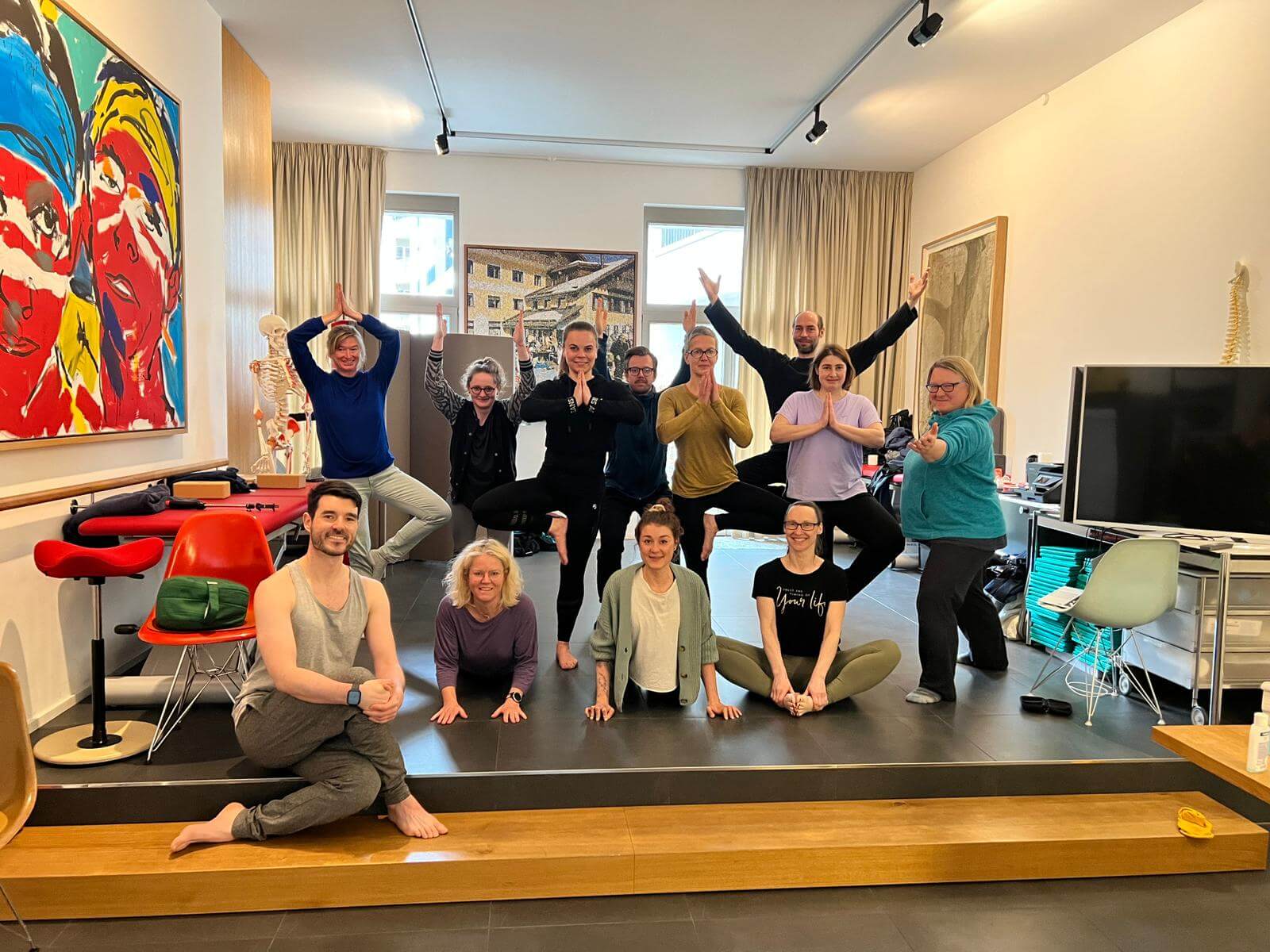N.A.P.® – the bridge between orthopaedics and neurology
Functional activities determine body functions and shape body structures.
Patients learn to act instead of being treated!
NEW: Study on the evidence of N.A.P.
Neuroorthopaedic Activity-dependent Plasticity (N.A.P.®) is an integrative, neuroorthopaedic therapy that is used in neurological, orthopaedic and traumatological rehabilitation as well as in sports rehabilitation and prevention.
Philosophy
Plasticity means change or adaptation. The realization that body structures are influenced by functional activities determines the methodical approach of this therapy. The therapist learns to combine manual therapy knowledge and neurophysiological principles to promote motor learning in the patient.
Treatment spectrum
Chronic pain: migraine, tinnitus, dizziness, fibromyalgia Orthopedic disorders: Herniated discs, joint arthrosis, artificial joints, temporomandibular joint dysfunctions Injuries: complex bone, ligament and capsule injuries, whiplash, plexus palsy Neurological diseases: Stroke, traumatic brain injury, tumor, multiple sclerosis, Parkinson's disease Vital functions: breathing, eating, swallowing
Module 1: Lumbar spine/pelvis/lower extremities
25 teaching units/training points (2.5 days)
Module 2: Upper cervical joints/jaw/spine/upper extremities
25 teaching units/training points (2.5 days)
Course content
- Biomechanical correlations
- Clinically oriented examination and tests to differentiate between contractile and non-contractile structures as possible causes of pain symptoms
- Specific development of clinical hypotheses
- Evidence-based therapy principles for the promotion of motor learning
- The importance of the subcortical organization of proximal stability in instabilities
- Functional taping to promote dynamic stability
- The importance of the limbic system and the connection to the autonomic nervous system for pain and fear memory
- Habituation training to be able to delete automated protective programs
- Promoting long-term learning by encouraging sensorimotor strategies to experience daily life and work-related activities in a positive way
- Instructions for self-training with and without equipment
Module 3: Clinical application
40 teaching units/training points (4 days)
In this module, the treatment methods of N.A.P. therapy taught in modules 1 and 2 are deepened. Therapists learn to develop diagnosis-oriented and problem-solving therapy strategies for various neuro-orthopedic symptom complexes and to combine manual therapy knowledge and neurophysiological principles to promote the patient's motor learning. In addition to demonstration treatments by the course instructor, participants gain their own experience on patients in small groups.
By arrangement, you can invite your own patients to the course.
After completing all modules, it is possible to obtain the N.A.P. certificate, which enables inclusion in the N.A.P. therapist list. This is used to recommend qualified therapists. For the third module, participants bring videos of their own patient treatment in which the functional and everyday problems can be seen. Together with the lecturers, participants can analyze the approach, receive therapy suggestions if necessary and can practice possible practical interventions directly on each other during the course.
N.A.P.® Instructional Team
 N.A.P.® instructional team
N.A.P.® instructional team


